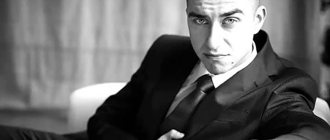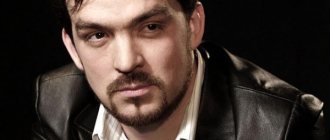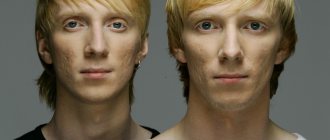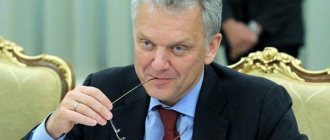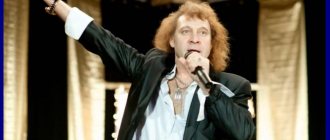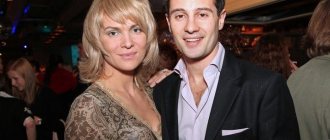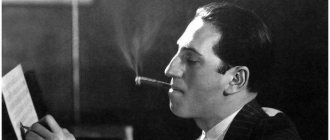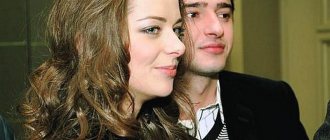Early years
Galileo, a native of the city of Pisa, had a noble origin, but his family was not rich. Galileo was the eldest child of four (a total of six children were born in the family, but two died). Since childhood, the boy was drawn to creativity: like his father, a musician, he was seriously interested in music, was an excellent painter and understood issues of fine art. He also had a literary gift, which allowed him to later express his scientific research in his writings.
He was an outstanding student at the monastery school. He wanted to become a clergyman, but changed his mind due to the rejection of this idea by his father, who insisted that his son receive a medical education. So at the age of 17, Galileo went to the University of Pisa, where, in addition to medicine, he studied geometry, which fascinated him greatly.
Already at this time, the young man was characterized by the desire to defend his own position, without fear of established authoritative opinions. Constantly argued with teachers on science issues. I studied at the university for three years. It is assumed that at that time Galileo learned the teachings of Copernicus. He was forced to quit his studies when his father could no longer pay for it.
Thanks to the fact that the young man managed to make several inventions, he was noticed. The Marquis del Monte, who was very fond of science and had good capital, especially admired him. So Galileo found a patron, who also introduced him to the Duke of Medici and got him a job as a professor at the same university. This time Galileo focused on mathematics and mechanics. In 1590, he published his work - the treatise “On Movement”.
Galileo thermometer
Carier start
Gradually abandoning his studies in medicine, he became an inventor. One of his first instruments was a hydrostatic balance. Then, at the age of 22, Galileo published a book on hydrostatic balance - thus his name became known in the city. However, for now it was necessary to find an opportunity to earn a living - technological progress was in its very infancy. Galileo first worked as an art teacher.
At the age of 24, he began teaching art. He did not stay long in this job - his scientific and mathematical abilities were noticed, and in 1589, at the age of only 25, he received a job offer at the Faculty of Mathematics at the University of Pisa. The young scholar worked here for three years before moving to Padua and becoming a teacher at the local university in 1592. Galileo settled in this city, where he taught mathematics, physics and astronomy, and made many important scientific discoveries.
These happy, fruitful years were overshadowed by a sad event - his father died in 1591.
He continued his research and in 1593 published the first book “Mechanics”, where he described all his observations over several years. After the publication of his scientific work, the name of Galileo became known throughout almost all of Italy. But the main invention was waiting for him ahead - a telescope with a concave eyepiece, with which it was possible to observe the stars and make various astronomical discoveries.
Of course, such research could not go unnoticed by the church - already in 1604 the first denunciation of Galileo was laid on the table of the Inquisition. Allegedly, he read forbidden literature in his room and practiced astrology, which was then equivalent to alchemy. However, this time he was lucky - the inquisitor in Padua sympathized with the young talent and ignored the denunciation.
Nevertheless, with the help of a telescope, Galileo made several stunning discoveries that, years later, did not cease to excite descendants - he discovered the first satellites in the orbit of a planet other than Earth - Jupiter. The four largest moons of the planet that he discovered were named Io, Europa, Ganymede and Callisto. And together they are known as the satellites of Galileo. Galileo also discovered that Venus has phases similar to the Moon, ranging from a thin crescent to a full moon.
This was the first practical, observational evidence that the sun is at the center of the solar system. In addition, he is credited with the discovery of the rings of Saturn. Well, a truly revolutionary discovery - there are mountains on the Moon. For that time it was a real shock. The Milky Way, according to Galileo’s research, consisted of stars located close to each other (which gives the impression of a lunar “path”).
He was also the first person to see the planet Neptune. This is known for certain from the drawings in his notebook. He noticed that it was moving, unlike other stars. At the time of Galileo, the planets Mercury, Venus, Mars, Jupiter and Saturn had been known for thousands of years, and no others were considered or sought. Unfortunately, Galileo lost track of the moving star he had found. Neptune was only rediscovered in 1846.
Galileo Galilei also adhered to the heliocentric system - the same one that Copernicus proposed. Through his telescope, he saw that the Polish astronomer was right, and his own research proved that it was the Sun that was in the center, and the planets revolved around it. Unfortunately, in those days, many scientific discoveries were contrary to church teachings. Therefore, the Inquisition began to pay closer attention to Galileo. The scientist was summoned to Rome and demanded to stop his research and not mislead the people. I had to obey. But Galileo did not give up and in 1632 published a book-dialogue in which supporters of Copernicus and the teachings of Aristotle and Ptolemy discussed the solar system and planets.
The book was published and was a success in the first two months. Then it was banned, and the author was again summoned to the Pope. This time the matter was set in motion. The investigation lasted several months, and the result was Galileo's renunciation of his beliefs.
Professor in Venice
From 1592 to 1610, Galileo taught at the University of Padua, became the head of the mathematics department, and was famous in scientific circles. Galileo's most active activity occurred at this time. He was very popular among students who dreamed of attending his classes. Famous scientists corresponded with him, and the authorities constantly set new technical tasks for Galileo. At the same time, the treatise “Mechanics” was published.
When a new star was discovered in 1604, his scientific research turned to astronomy. In 1609, he assembled the first telescope, with the help of which he seriously advanced the development of astronomical science. Galileo described the surface of the Moon, the Milky Way, and discovered the satellites of Jupiter. His book The Starry Messenger, published in 1610, was a huge success and made the telescope a popular purchase in Europe. But along with recognition and veneration, the scientist is also accused of the illusory nature of his discoveries, as well as of his desire to harm the medical and astrological sciences.
Soon, Professor Galileo entered into an unofficial marriage with Marina Gamba, who bore him three children. Having responded to an offer of a high position in Florence from the Duke of Medici, he moves and becomes an adviser at court. This decision allowed Galileo to pay off large debts, but partly played a disastrous role in his fate.
The first scientific experiment in physics
According to him, the movement of the Earth's bodies is divided into “natural”, when they tend to their “natural places” (for example, downward movement for heavy bodies and “upward” movement) and “violent” movement. The movement stops when the cause disappears. “Perfect celestial bodies” are eternal motion in perfect circles around the center of the Earth (and the center of the world). To refute Aristotle's assertions that bodies fall at a speed proportional to their weights, Galileo made his famous experiments with bodies falling from the leaning tower at Pisa.
This is actually the first scientific experiment in physics and with it Galileo introduces a new method of acquiring knowledge - from experience and observation. The result of these studies is the treatise “Falling Bodies,” which sets out the main conclusion about the independence of speed from the weight of a falling body. It is written in a new style for scientific literature - in the form of a dialogue, which reveals the main conclusion about the speed that does not depend on the weight of the falling body.
The lack of a scientific base and low pay force Galie to leave the University of Pisa before the expiration of his three-year contract. At that time, after his father died, he had to take over the family. Galileo is invited to take up the chair of mathematics at the University of Padua. The University of Padua was one of the oldest in Europe and was renowned for its spirit of freedom of thought and independence from the clergy. Here Galileo worked and quickly made a name for himself as an excellent physicist and a very good engineer. In 1593, his first two works were completed, as well as “Mechanics”, in which he outlined his views on the theory of simple machines, invented proportions with which it is easy to perform various geometric operations - enlargement of a drawing, etc. His patents for hydraulic equipment also preserved. Galileo's lectures at the university voiced official views, he taught geometry, Ptolemy's geocentric system and Aristotle's physics.
Related article: Nazis in Antarctica. The search for the “paradise city” and frightening UFOs
Life in Florence
In a new place, the scientist continued his astronomical research. It was typical for him to present his discoveries in a cocky style, which greatly irritated other figures, as well as the Jesuits. This led to the formation of an anti-Galilean society. The main complaint from the church was the heliocentric system, which contradicts religious texts.
In 1611, the scientist went to Rome to meet with the head of the Catholic Church, where he was received quite warmly. There he introduced the telescope to the cardinals and tried, with caution, to give some explanations. Later, encouraged by a successful visit, he published his letter to the abbot that Scripture could not have authority in matters of science, which attracted the attention of the Inquisition.
Galileo demonstrates the laws of gravity (fresco by D. Bezzoli, 1841)
His 1613 book “Letters on Sunspots” contained open support for the teachings of N. Copernicus. In 1615, the Inquisition opened its first case against Galileo. And after he called on the Pope to express his final point of view on Copernicanism, the situation only worsened. In 1616, the church declared heliocentrism a heresy and banned Galileo's book. Galileo's attempts to correct the situation led to nothing, but they promised not to persecute him if he stopped supporting the teachings of Copernicus. But for a scientist convinced of his rightness, this was impossible.
Nevertheless, for a while he decided to turn his energy in a different direction, taking up criticism of the teachings of Aristotle. The result was his book “The Assay Master,” written in 1623. At the same time, Galileo Barberini's longtime friend was elected Pope. Hoping to lift the ban on the church, the scientist went to Rome, where he was well received, but did not achieve what he wanted. Galileo further decided to continue to defend the truth in his writings, considering several scientific points of view from a position of neutrality. His "Dialogue Concerning the Two World Systems" lays the foundations for the new mechanics.
Galileo Galileo
Details Category: Physicists Published: 02/25/2016 16:23 Author: Biographer
Galileo Galileo
Born: February 15, 1564. Died: January 8, 1642 (77 years old).
Galileo Galilei (Italian: Galileo Galilei; February 15, 1564, Pisa - January 8, 1642, Arcetri) was an Italian physicist, mechanic, astronomer, philosopher and mathematician who had a significant influence on the science of his time. He was the first to use a telescope to observe celestial bodies and made a number of outstanding astronomical discoveries. Galileo is the founder of experimental physics. With his experiments, he convincingly refuted Aristotle's speculative metaphysics and laid the foundation of classical mechanics.
During his lifetime, he was known as an active supporter of the heliocentric system of the world, which led Galileo to a serious conflict with the Catholic Church.
Galileo's conflict with the church
Having submitted his “Dialogue” to the Catholic censor in 1630, Galileo waited a year, after which he resorted to a trick: he wrote a preface about the rejection of Copernicanism as a teaching. As a result, permission was received. Published in 1632, the book did not contain the author's specific conclusions, although it clearly made sense in the argumentation of the Copernican system. The work was written in accessible Italian; the author also independently sent copies to senior church officials.
A few months later, the book was banned and Galileo was called to trial. He was arrested and held in captivity for 18 days. Thanks to the efforts of his student Duke, the scientist was shown leniency, although he was allegedly still tortured. The investigation lasted two months, after which Galileo was found guilty and sentenced to life imprisonment, and he also had to renounce his own “delusions.” He did not actually utter the now famous phrase “Still it turns,” which is attributed to Galileo. This legend was invented by the Italian literary figure D. Baretti.
Galileo before the Judgment (K. Bunty, 1857)
Ban on "Dialogue"
For two years he collected permission from the highest spiritual authorities and the censors of the Inquisition, and at the beginning of 1632 the book was published. But very soon there is a strong reaction from theologians. The Roman Pontiff was convinced that he was depicted under the image of Simplicio. A special commission of theologians was appointed, which declared the work heretical, and the seventy-year-old Galileo was summoned to trial in Rome. The process launched by the Inquisition against him lasts a year and a half and ends with a verdict according to which “Dialogue” is prohibited.
Related article: Hitler's final resting place outside Germany
Galileo's process
Old age
The scientist did not stay in prison for long; he was allowed to live on the Medici estate, and after five months he was allowed to return home, where he continued to be monitored. Galileo settled in Arcetri near the monastery where his daughters served, and spent his last years under house arrest. He was subject to a large number of prohibitions, which made it difficult for him to undergo treatment and communicate with friends. Later they were allowed to visit the scientist one at a time.
Despite the difficulties, Galileo continued to work in non-prohibited scientific areas. He published a book about mechanics, planned to anonymously publish a book in defense of his views, but did not have time. After the death of his beloved daughter, he became blind, but continued to work and wrote a work on kinematics, published in Holland and which became the basis for the research of Huygens and Newton.
Galileo died and was buried in Arcetri; the church prohibited burial in the family crypt and the erection of monuments to the scientist. His grandson, the last representative of the family, having become a monk, destroyed valuable manuscripts. In 1737, the remains of the scientist were transferred to the family tomb. It was only in the late 70s of the last century that the Catholic Church rehabilitated Galileo; in 1992, the mistake of the Inquisition was officially recognized.
[edit] Biography
[edit] Early years
Statue in Florence
Galileo was born in Italy, in the city of Pisa, near Florence, into the family of a well-born but impoverished nobleman, Vincenzo Galilei, a music theorist and lutenist. Representatives of the Galilean family have been mentioned in documents since the 14th century. Several of his direct ancestors were priors (members of the governing council) of the Florentine Republic, and Galileo's great-great-grandfather (also named Galileo), was a famous physician, and in 1445 he was elected chairman of the republic.
In the family of Galileo's parents - Vincenzo Galilei and Giulia Ammannati - there were six children, but four managed to survive: Galileo's eldest son, daughters Virginia and Livia, and the youngest son Michelangelo, who later also gained fame as a lutenist composer. In 1572, Vincenzo moved to Florence, the capital of the Duchy of Tuscany. The Medici dynasty that ruled there was known for its patronage of the arts and sciences.
From an early age the boy was attracted to art; Throughout his life he carried his love for music and drawing, which he mastered to perfection. In his adult years, the best artists of Florence - Cigoli, Bronzino and others - consulted with him on issues of perspective and composition; Cigoli even claimed that it was to Galileo that he owed his fame. From the works of Galileo we can conclude that he had literary talent. Galileo received his primary education at the nearby monastery of Vallombrosa. The boy loved to study and became one of the best students in the class. He considered becoming a priest, but his father was against it.
In 1581, Galileo entered the University of Pisa, where he studied medicine. But, fascinated by geometry and mechanics, in particular the works of Archimedes and Euclid, he left the university with its scholastic lectures and returned to Florence, where for four years he independently studied mathematics, which he considered a reliable basis for studying the world.[1]
In 1589 he became a professor at the University of Pisa. In 1592-1610, after his forced departure from Pisa, Galileo worked at the mathematics department of the University of Padua, and later became the court philosopher of Duke Cosimo II de' Medici. Since April 25, 1611, Galileo belonged to the Accademia dei Lincei. They said that the world had not seen such a genius since Archimedes.[1]
[edit] Conflict with the church
In March 1630, the book “Dialogue on the two most important systems of the world - Ptolemy and Copernicus,” the result of almost 30 years of work, was generally completed, and Galileo, deciding that the moment for its publication was favorable, provided the then version to his friend, the papal censor Riccardi . He waits for his decision for almost a year, then decides to use a trick. He adds a preface to the book, where he declares his goal to debunk Copernicanism and transfers the book to the Tuscan censorship, according to some information, in an incomplete and softened form. Having received a positive review, he sent it to Rome. In the summer of 1631 he received the long-awaited permission.
At the beginning of 1632, the Dialogue was published. The book is written in the form of a dialogue between three lovers of science: the Copernican Salviati, the neutral Sagredo and Simplicio, a supporter of Aristotle and Ptolemy. Although the book does not contain the author's conclusions, the strength of the arguments in favor of the Copernican system speaks for itself. The book was written not in scientific Latin, but in “folk” - Italian.
Galileo hoped that the Pope would treat his trick as leniently as he had earlier in the “Letters to Ingol”, which had similar ideas, but he miscalculated. To top it all off, he himself recklessly sent 30 copies of his book to influential clergy in Rome. Shortly before this (1623), Galileo came into conflict with the Jesuits; He had few defenders left in Rome, and even those, assessing the danger of the situation, chose not to intervene.
Most biographers agree that in the simpleton Simplicio, Pope Urban VIII recognized himself, his arguments, and became angry. Historians note such characteristic features of Urban as despotism, stubbornness and incredible conceit. Galileo himself later believed that the initiative of the process belonged to the Jesuits, who submitted an extremely tendentious denunciation to the Pope about Galileo’s book (see below Galileo’s letter to Diodati). Within a few months, the book was banned and withdrawn from sale, and Galileo was summoned to Rome (despite the plague epidemic) to be tried by the Inquisition on suspicion of heresy. After unsuccessful attempts to obtain a reprieve due to poor health and the ongoing plague epidemic (Urban threatened to bring him to court by force, in shackles), Galileo complied, served the required plague quarantine and arrived in Rome on February 13, 1633. Niccolini, the representative of Tuscany in Rome, at the direction of Duke Ferdinand II, settled Galileo in the embassy building. The investigation lasted from April 21 to June 21, 1633.
After the end of the first interrogation, the accused was arrested. Galileo was imprisoned for only 18 days (from April 12 to April 30, 1633) - this unusual leniency was probably caused by Galileo's agreement to repent, as well as the influence of the Tuscan Duke, who constantly sought to mitigate the fate of his old teacher. Taking into account his illness and advanced age, one of the service rooms in the building of the Inquisition Tribunal was used as a prison.
After the "test" in a letter from prison (April 23), Galileo cautiously reports that he does not get out of bed because he suffers from "a terrible pain in his thigh." Some biographers of Galileo suggest that torture really took place, while others consider this assumption unproven, only the threat of torture was documented, often accompanied by an imitation of the torture itself. In any case, if there was torture, it was on a moderate scale, since already on April 30 the scientist was released back to the Tuscan embassy.
Scientific topics were not discussed during the trial. Three Inquisition experts gave their conclusion: the book violates the ban on promoting the “Pythagorean” doctrine. There were two main questions: did Galileo deliberately violate the edict of 1616, and does he repent of what he did? As a result, the scientist was given a choice: either he would repent and renounce his “mistakes,” or he would suffer the fate of Giordano Bruno and many others tortured by the Inquisition. On June 16, the Inquisition held a plenary meeting with the participation of Urban VIII, where it decided:
Having familiarized himself with the entire course of the case and having listened to the testimony, His Holiness decided to interrogate Galileo under threat of torture and, if he resists, then after a preliminary renunciation as highly suspected of heresy... to sentence him to imprisonment at the discretion of the Holy Congregation. He is ordered to no longer reason (in writing or orally) about the movement of the Earth and the real estate of the Sun... under pain of punishment as incorrigible.
Galileo's last interrogation took place on June 21. Galileo confirmed that he agreed to express the required renunciation. He was released to the embassy and arrested again. On June 22, the verdict was announced: Galileo was guilty of distributing a book with a “false, heretical teaching” about the movement of the Earth, which contradicts the Holy Scriptures.[2]
Galileo was sentenced to imprisonment for a period to be determined by the Pope. He was declared NOT a heretic, but “very suspected of heresy”; This formulation was a grave accusation, but it saved him from the fire. After the verdict was announced, Galileo made the proposed recantation on his knees. Copies of the verdict, by personal order of Pope Urban, were sent to all universities in Catholic Europe.
[edit] Recent years
The Pope did not keep Galileo in prison for long. After the verdict, Galileo was settled in one of the Medici villas, from where he was transferred to the palace of his friend, Archbishop Piccolomini in Siena. Five months later, Galileo was allowed to go home, and he settled in Arcetri, next to the monastery where his daughters were. Here he spent the rest of his life under house arrest and constant surveillance by the Inquisition.
Galileo's detention regime was no different from prison, and he was constantly threatened with transfer to prison for the slightest violation of the regime. Galileo was not allowed to visit cities, although the seriously ill prisoner needed constant medical supervision. In the first years, he was forbidden to receive guests on pain of being transferred to prison; later the regime was somewhat relaxed, and friends were able to visit Galileo - however, no more than one at a time.
The Inquisition monitored the prisoner for the rest of his life; even at the death of Galileo, two of its representatives were present. All his printed works were subject to particularly careful censorship. True, in Protestant Holland the publication of the Dialogue continued (first publication: 1635, translated from Latin).
In 1634, his eldest 33-year-old daughter Virginia (Maria Celeste in monasticism), Galileo’s favorite, who devotedly cared for her sick father and was acutely worried about his disagreements, died. Galileo writes that he is possessed by “boundless sadness and melancholy... I constantly hear my dear daughter calling me.” Galileo's health deteriorated, but he continued to work energetically in the areas of science allowed to him. Galileo outlived his daughter Virginie by eight years and died blind. The second daughter Livia will also end her life in the monastery. The only grandson, the son of Vincenzo, became a monk and burned all his grandfather’s manuscripts as ungodly. With him the line of Galileo will end.[1]
Galileo's last book was Discourses and Mathematical Proofs of Two New Sciences, which outlined the fundamentals of kinematics and strength of materials. In fact, the content of the book is a demolition of Aristotelian dynamics; Instead, Galileo puts forward his principles of motion, tested by experience. Challenging the Inquisition, Galileo brought out the same three characters in a new book, and in the previously banned “Dialogue on the Two Chief Systems of the World.” In May 1636, the scientist negotiated the publication of his work in Holland, and then secretly sent the manuscript there. In a confidential letter to Comte de Noël (to whom he dedicated this book), Galileo wrote that the new work “puts me again in the ranks of the fighters.” “Conversations...” was published in July 1638, and the book reached Arcetri almost a year later - in June 1639. This work became a reference book for Huygens and Newton, who completed the construction of the foundations of mechanics begun by Galileo.
Galileo died on January 8, 1642. Pope Urban forbade his burial in the family crypt. He was buried in Arcetri, the town where he lived in his last years, without a monument. It was not until 1737 that the remains were reburied in the Basilica of Santa Croce next to Michelangelo.[1]


